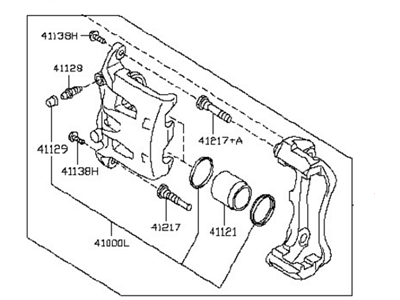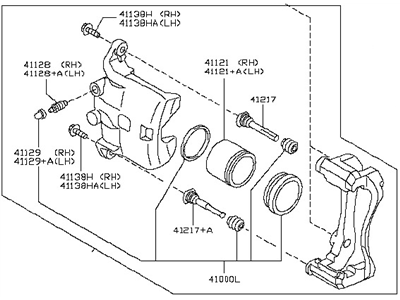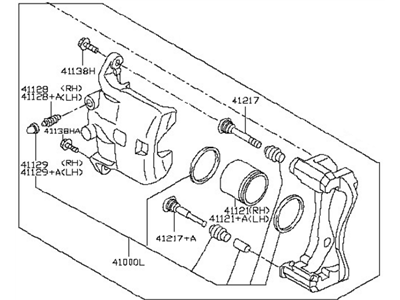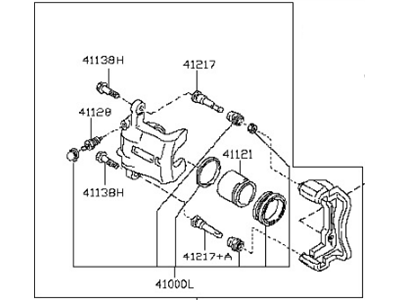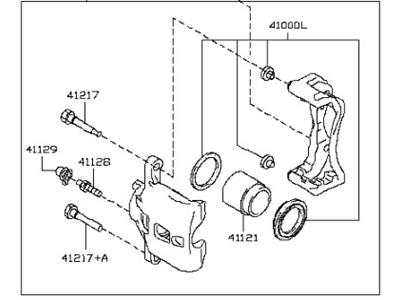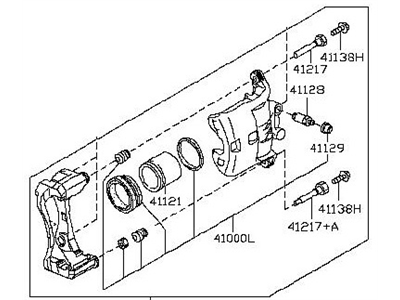×
- Hello
- Login or Register
- Quick Links
- Live Chat
- Track Order
- Parts Availability
- RMA
- Help Center
- Contact Us
- Shop for
- Nissan Parts
- Nissan Accessories

My Garage
My Account
Cart
Genuine Nissan Versa Brake Caliper
Caliper- Select Vehicle by Model
- Select Vehicle by VIN
Select Vehicle by Model
orMake
Model
Year
Select Vehicle by VIN
For the most accurate results, select vehicle by your VIN (Vehicle Identification Number).
12 Brake Calipers found
Nissan Versa CALIPER Assembly-Front RH,W/O Pad & SHIM
Part Number: 41001-5RB0A$221.66 MSRP: $304.30You Save: $82.64 (28%)Ships in 1-3 Business DaysNissan Versa Caliper Assy-Front LH,W/O Pad & Shim
Part Number: 41011-5RB0A$221.66 MSRP: $304.30You Save: $82.64 (28%)Ships in 1-3 Business DaysNissan Versa CALIPER Assembly-Front LH,W/O Pads Or SHIMS
Part Number: 41011-1HL0A$335.08 MSRP: $509.17You Save: $174.09 (35%)Ships in 1-3 Business DaysNissan Versa CALIPER Assembly-Front RH,W/O Pads Or SHIMS
Part Number: 41001-1HL0A$267.57 MSRP: $509.17You Save: $241.60 (48%)Ships in 1 Business DayNissan Versa CALIPER Assembly-Front LH, W/O Pads Or SHIMS
Part Number: 41011-EM30B$412.00 MSRP: $579.85You Save: $167.85 (29%)Nissan Versa CALIPER Assembly-Front RH, W/O Pads Or SHIMS
Part Number: 41001-1FC0A$476.84 MSRP: $579.85You Save: $103.01 (18%)Ships in 1-2 Business DaysNissan Versa CALIPER Assembly-Front RH,W/O Pads Or SHIMS
Part Number: 41001-EM30A$412.00 MSRP: $579.85You Save: $167.85 (29%)Nissan Versa CALIPER Assembly-Front RH, W/O Pads Or SHIMS
Part Number: 41001-EM30B$412.00 MSRP: $579.85You Save: $167.85 (29%)Nissan Versa CALIPER Assembly-Front LH, W/O Pads Or SHIMS
Part Number: 41011-1FC0A$476.84 MSRP: $579.85You Save: $103.01 (18%)Ships in 1-2 Business DaysNissan Versa CALIPER Assembly-Front LH,W/O Pads Or SHIMS
Part Number: 41011-EM30A$412.00 MSRP: $579.85You Save: $167.85 (29%)
Nissan Versa Brake Caliper
If you need any OEM Nissan Versa Brake Caliper, feel free to choose them out of our huge selection of genuine Nissan Versa Brake Caliper. All our parts are offered at unbeatable prices and are supported by the manufacturer's warranty. In addition, we offer quick shipping to have your parts delivered to your door step in a matter of days.
Nissan Versa Brake Caliper Parts Questions & Experts Answers
- Q: Should calipers be replaced rather than overhauled if fluid leakage is indicated on Nissan Versa?A:When overhauling is recommended because of leakage, then it is advisable to replace the calipers instead of doing overhaul. New and factory rebuilt units are procurable on an exchange basis; therefore, this job is rather simple. It is very important to always calipers in pairs; one must never replace one calipers while the other remains in use. After deactivating the wheel, unbolt the front or rear wheel lug nuts and support the car on jackstands then block the other ends of the wheel and then remove the calipers. Then, you have to take out the bent shaft and banjo bolt, and caliper lower mounting bolt, then you have to detach the brake hose from the caliper, discarding the sealing washers and replacing them with new ones. To get rid of undesirable debris and possibly reduce brake fluid loss, cap the brake hose. Next, take off caliper mounting bolts and take out the caliper from its position on the bracket. To install it, do the opposite of what you did during the removal of the part; ensure that you tighten the caliper mounting bolt and the wheel lug nuts to the stipulated torque recommended, and ensure you replace the sealing washers of the brake hose to the caliper banjo bolt. Last but not the least, it is time to release the brake fluid, check for leakages through the hose connectors and then test the brakes with all the caution before getting the vehicle back in normal service.
Related Nissan Versa Parts
Browse by Year
2024 Brake Caliper 2023 Brake Caliper 2022 Brake Caliper 2021 Brake Caliper 2020 Brake Caliper 2019 Brake Caliper 2018 Brake Caliper 2017 Brake Caliper 2016 Brake Caliper 2015 Brake Caliper 2014 Brake Caliper 2013 Brake Caliper 2012 Brake Caliper 2011 Brake Caliper 2010 Brake Caliper 2009 Brake Caliper 2008 Brake Caliper 2007 Brake Caliper


